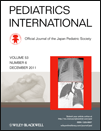Maternal and fetal circulation of unusual bile acids: A pilot study
Abstract
Background: Large amounts of unusual bile acids are synthesized by the fetal liver in late gestation. These compounds are mostly transferred from fetus to mother, although some are excreted into the amniotic fluid. We investigated the role of placental transfer of bile acids in fetal bile acid metabolism, particularly with respect to the unusual bile acids (1β-hydroxylated and ketonic bile acids).
Methods: We measured concentrations of bile acids in umbilical cord blood and urine of newborn infants, and in perinatal maternal serum and urine, using gas chromatography-mass spectrometry. Serum and urine specimens from healthy non-pregnant women were used as controls.
Results: In newborn infants at delivery, cord blood and urine contained mostly primary and 1β-hydroxylated bile acids, respectively. We also detected large amounts of ketonic bile acids in their urine, and the urinary concentration of total bile acids was elevated. Main maternal bile acids at 30 and 35 weeks of gestation and at delivery were 1β-hydroxylated bile acids. After delivery, main bile acids changed from 1β-hydroxylated bile acids to primary bile acids (P < 0.03), which also predominated in healthy non-pregnant women.
Conclusion: Fetally synthesized unusual bile acids were transported from fetus to mother. Pregnant women appear to excrete these bile acids into the urine, lowering both fetal and maternal serum bile acid concentrations.




